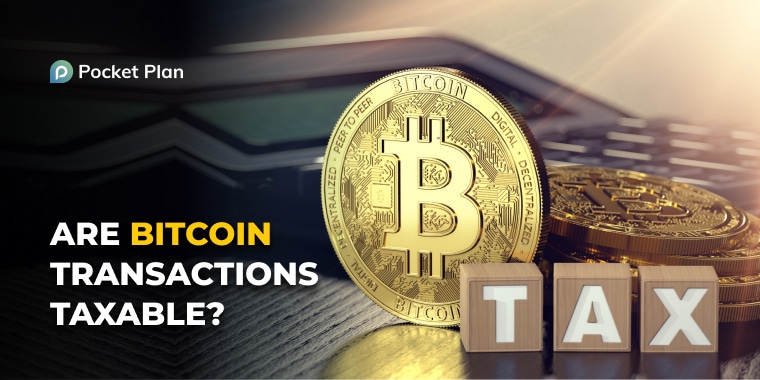Bitcoin is a decentralized digital currency that operates on a peer-to-peer network. It is used for various transactions, including buying and selling goods and services, and for investments. One of the primary concerns of people using Bitcoin is whether transactions made using Bitcoin are reversible or not. In this blog post, we will explore this question in depth and discuss the various factors that determine whether Bitcoin transactions are reversible or not.
Firstly, it is essential to understand that Bitcoin transactions are irreversible, which means that once a transaction is made, it cannot be reversed. This is because Bitcoin transactions are recorded on a public ledger called the blockchain, which is a decentralized and distributed database of all transactions made using Bitcoin. Each block in the blockchain contains a record of several transactions that have been verified by the network of users.
Once a transaction is recorded on the blockchain, it cannot be altered or deleted. This means that if someone sends Bitcoin to the wrong address or makes a mistake in the transaction, they cannot reverse the transaction. The only way to get the Bitcoin back is to contact the recipient and request them to send the Bitcoin back.
However, there are some scenarios where Bitcoin transactions can be reversed. One of the most common scenarios is when a transaction is unconfirmed. When a Bitcoin transaction is made, it is sent to the network of users for verification. The verification process can take several minutes to a few hours, depending on the network’s congestion. During this time, the transaction is considered unconfirmed, and it can be reversed.
If a transaction is unconfirmed, the sender can send another transaction with the same inputs but a higher fee. This new transaction will have a higher priority, and the network will prioritize it over the original transaction. Once the new transaction is confirmed, the original transaction becomes invalid, and the funds are returned to the sender’s wallet.
Another scenario where Bitcoin transactions can be reversed is when there is a dispute between the parties involved in the transaction. For example, if someone sends Bitcoin to a merchant for goods or services, but the merchant does not deliver the goods or services as promised, the sender can file a dispute with the merchant’s payment processor. If the dispute is found in favor of the sender, the transaction can be reversed, and the Bitcoin can be returned to the sender.
However, it is worth noting that these scenarios are rare, and Bitcoin transactions are typically irreversible. This is one of the reasons why Bitcoin is considered a more secure form of currency than traditional fiat currencies, which can be reversed or charged back.
There are several advantages to irreversible Bitcoin transactions. Firstly, it reduces the risk of fraud and chargebacks. When transactions are irreversible, there is no way for the recipient to dispute the transaction and claim that they did not receive the funds. This reduces the risk of fraud and ensures that transactions are secure and reliable.
Secondly, irreversible Bitcoin transactions reduce the cost of transactions. In traditional payment systems, such as credit card payments, the cost of transactions is high due to chargebacks and fraud. This cost is typically passed on to the consumer in the form of higher fees. With Bitcoin, transactions are irreversible, and the cost of transactions is significantly lower, making it an attractive option for businesses and consumers alike.
However, there are also some disadvantages to irreversible Bitcoin transactions. One of the main disadvantages is that it increases the responsibility of the sender. When transactions are irreversible, it is essential to ensure that the transaction details, such as the recipient’s address and the amount sent, are correct before sending the funds. Any mistakes made in the transaction cannot be corrected, and the funds cannot be recovered.
In conclusion, Bitcoin transactions are not reversible. Once a transaction is confirmed and added to the blockchain, it cannot be changed or canceled. This is one of the key features of the Bitcoin network and provides a level of security and immutability that is not found in traditional payment systems. However, it also means that users need to take extra precautions to ensure they are sending Bitcoin to the correct address and that they have control over their private keys.
If you accidentally send Bitcoin to the wrong address, there is no guarantee that you will be able to recover it. While some wallets and exchanges have mechanisms in place to recover lost funds, these are not foolproof and are often dependent on the cooperation of the recipient. Therefore, it is important to double-check the recipient’s address before sending any Bitcoin and to only use trusted wallets and exchanges.
In addition, if you are using Bitcoin for large transactions or as a store of value, it is essential to take extra precautions to secure your private keys. Storing Bitcoin on a centralized exchange or using a custodial wallet can increase the risk of theft or loss, as these platforms are vulnerable to hacks and other security breaches. Using a hardware wallet or a self-custody wallet can provide an extra layer of security and give you full control over your private keys.
Overall, Bitcoin transactions are irreversible, but this is not necessarily a disadvantage. The immutability of the blockchain provides a high degree of security and trust, which is essential for a decentralized currency. However, it also means that users need to be careful when sending Bitcoin and take extra precautions to secure their private keys. By understanding the risks and benefits of Bitcoin transactions, users can make informed decisions and take steps to protect their funds.






